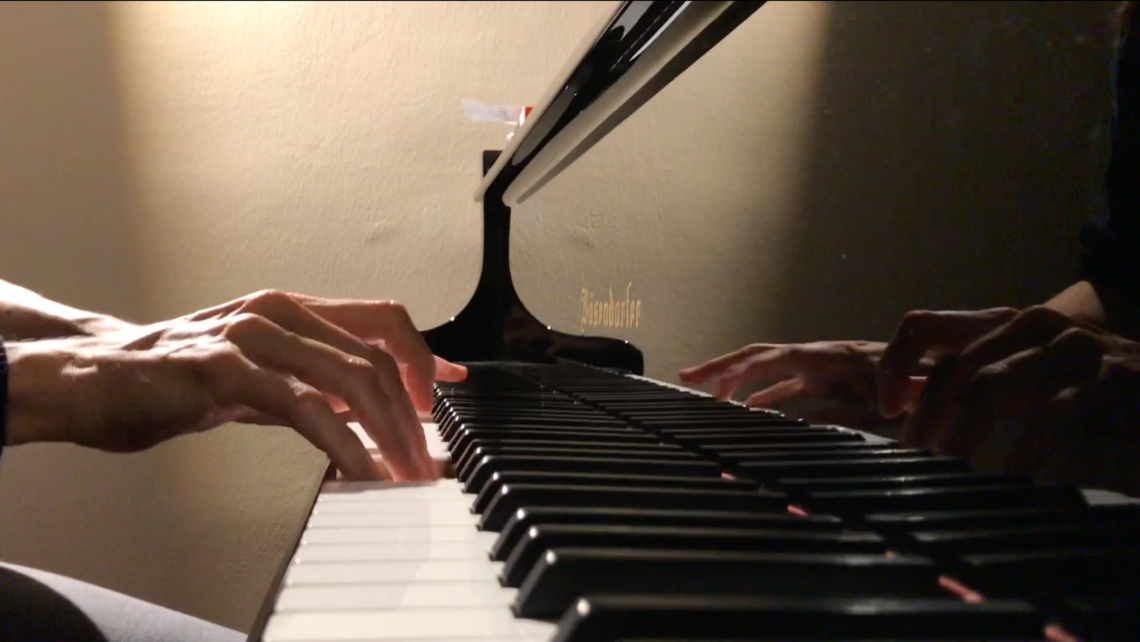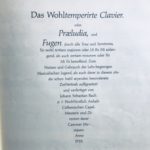(link to the recording of the Final Version please see at the end of post)
The Becoming of Fugue in C, BWV 846, Wohltemperiertes Clavier I
While evaluating the sources for editing Bach’s WTC I for Bärenreiter Urtext Edition, Alfred Dürr considered “Variante: Stadium A1-2”, a pre-version of Fugue BWV 846, as such a valuable source that he added it to Bärenreiter’s WTC I edition.
I am glad he did. This “Variante” (referred to as A1 in the following) gives a fascinating insight in Bach processing this Fugue and finding to its final theme. After all, “Variante” is already a fully developed Fugue, almost identical with the final version, but there’s one significant difference, the rhythm of the theme, in detail: the punctuation.
Some might consider this rhythmical shift within the third quarter of the bar, as a tiny neglectable mutation, but I can assure you, it is not tiny, and it is not neglectable. It changes the character, the tempo and last but not least the perceptibility of the polyphony in general since by adding the punctuation the theme becomes far more characteristic than without. In a four voice Fugue this makes every theme entrance more audible.
Being able to read the composer’s thoughts while he formed a piece would be, as you might agree, highly captivating. I am not talking about diaries or letter correspondence or, a nowadays’ phenomenon, interviews or podcasts. I am referring to his thoughts in developing themes and form, in developing character and tempo of the piece while forming its motivic elements: it is reading and hearing the musical elements in process.
I recorded both versions -A1 and final version, as we know it- to show you what effect a tiny rhythmical change in the theme provokes in interpretation and how Bach’s idea of the piece progressed through time.
Again the one and only difference is: in A1 Bach writes a quaver followed by two semiquavers instead of a punctuated quaver and two demisemiquavers (see photo of each score in the particular clip). How and why can such a tiny rhythmical mutation have such an effect on the whole piece? To begin with, it’s a change within the heart of the piece, within the genetic code, as the theme of a fugue is the DNA of the piece.
Now let us consider the foremost questions that a reader might immediately come up with:
- why did Bach punctuate the third quarter of the theme in his final version?
- what was the benefit of changing?
Being familiar with Bach’s WTC, his Toccatas, his Suites and Partitas, his Inventions and Sinfonias (see blog post “J. S. Bach Inventionen und Sinfonien als pädagogischer Ansatz für Analyse und Interpretation” ) I can only assume answers to these questions with my experience in performing and reading Bach’s music: he never considered his works as finished in the sense of „I am done with it“. We know that Bach took previous pieces to revise them, or to „re-use“ them in a different context (for example we find Preludes of the WTC1 already in „Klavierbüchlein für Wilhelm Friedemann Bach“, see “J. S. Bach Inventionen und Sinfonien als pädagogischer Ansatz für Analyse und Interpretation” ). After all, at Bach’s time composing was considered a craft and music was meant to be a commodity: in Bach’s hands a commodity of highest possible standard meant to serve God.
Nevertheless, whenever Bach got hold of one of his older pieces he very often further processed it and adapted it to his then, again advanced, musical understanding. The autograph from 1722 is the main source for WTC1, later adaptations and tiny mutations are being mentioned in Urtext editions.
Let me try to answer my previous questions.
We know that the whole set of WTC was meant as a didactic work, teaching students to compose, to use the material of all keys (a novelty in the early 18th century, made possible by new tuning systems, hence the title Well-tempered Clavier: referring to Werckmeister’s third temperament), to learn how to compose preludes (which Bach presents in all back then known forms) and fugues, and last but not least, how to play the instrument. The pedagogical intention becomes clear in Bach’s preface:
„Das Wohltemperirte Clavier. oder Praeludia, und Fugen durch alle Tone und Semitonia, So wohl tertiam majorem oder Ut Re Mi anlangend, als auch tertiam minorem oder Re Mi Fa betreffend. Zum Nutzen und Gebrauch der Lehr-begierigen Musicalischen Jugend, als auch derer in diesem studio schon habil seyenden besonderem ZeitVertreib auffgesetzet und verfertiget von Johann Sebastian Bach. p.t: HochFürstlich AnhaltCöthenischen CapelMeistern und Directore derer Cammer Musiquen. Anno 1722.“
If we take a closer look in detail at what the mutation of the rhythm does to the theme, we see, it changes the rhythmical balance of the whole theme. We have no note on first beat, Bach starts the theme off beat, as a quasi upbeat to the second half of the bar. This is interesting regarding that we do not have an „alla breve“ but a 4 quarter bar. Obviously he rather aims for a bar, divided in two, than a bar, divided in four, with writing this three-quaver long upbeat to the third beat. Now, without punctuation, this consequently either leads to a rather fluent tempo or has it sound a little dull with all the heavy quavers: my decision is documented in the clip. By the way, no matter what tempo I’d choose, the phrase of version A1 always climaxes into the syncopated quaver (bar 2).
So, again, why the change?
Assumption 1: may be Bach realized that his students (his wife, his children, whom he all taught, or his fellow musicians) understood and played the theme differently than he intended. So he might have reacted to this experience and adapt the theme? Let us keep in mind, Bach was a very engaged teacher.
Assumption 2: may be he developed a preference to a theme more melodic and slower in tempo in his later years, and with the adaptation he aspired to slow down the tempo. Why would a punctuation result in a slower tempo? Because the note becomes longer and the diminished notes (now demisemiquavers) are less stressed dynamically.
Assumption 3: this one is very obvious: the theme becomes more characteristic and transparent when in counterpoint with three other voices. With the punctuation and demisemiquavers the theme is far easier recognizable while listening.
Assumption 4: the melodic balance is more artistic, more elegant in the final version, with the punctuated note (bar 1) building an equivalent to the syncopated off-beat note (bar 2). This also results in a more balanced phrasing that won’t just aim for and culminate in the offbeat of the syncopated note: hence, we have a more balanced melody.
Assumption 5: with the punctuation Bach supports a more majestic and magnificent character of C Major; here is a summary of all keys and their characters in Bach’s oeuvre (in German), zusammengestellt von Daniel Johannsen Tonarten bei Bach, vergleichende Übersicht (Johannsen is a wonderful tenor, btw alumnus of MDW, my Alma Mater and my inspiring “teaching home”)
and, and, and…
If I only picked a few assumptions of all the ones going through my head while working on the piece, then, because I want to bring you back to the essence: this here is music, scientific analysis is neither the ultimate result nor the aim of an interpreter. Comparing these two versions of Fugue BWV 846 is meant to give you a clue what the process of working on an interpretation involves and how I benefit from excellent scientific research: thanks to all Urtext editors out there who do a wonderful job. And whatever my findings here may reveal to me, I eventually have to convert them into singing and breathing on my instrument, as is the essence of music.
© Gerda Struhal, 2020
My gratitude to Bärenreiter Urtext Edition and Bach Archiv Leipzig to allow me to use their score in my clips.
“Fuge C-Dur, BWV 846”
„Variante: Fuga 1 im Stadium A 1-2“
aus: Johann Sebastian Bach: Das Wohltemperierte Klavier I, BWV 846-869 – Neue Ausgabe sämtlicher Werke, Serie V: Klavier- und Lautenwerke, Band 6.1 – Herausgegeben von Alfred Dürr, BA 5070-01, Seite 6
© 1989 by Bärenreiter-Verlag Karl Vötterle GmbH & Co. KG, Kassel

